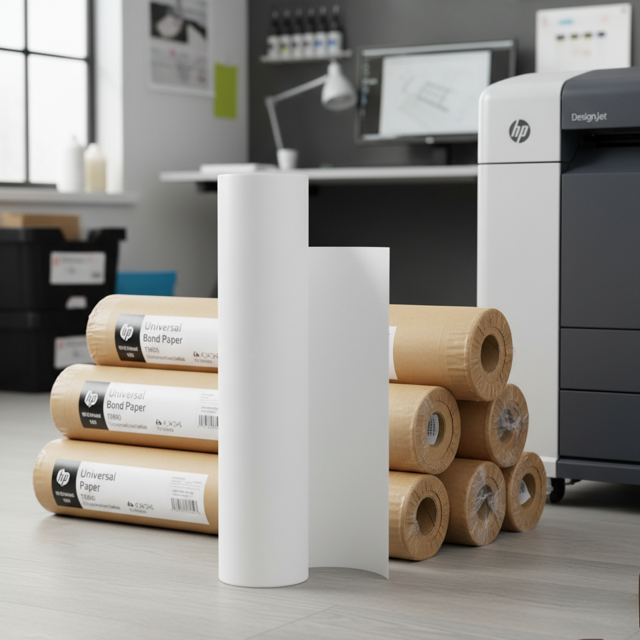
DISCOUNTED EDUCATION PRICING! CALL 1-877-891-8411. We Gladly Accept School Purchase Orders!

By Alex Rivera, Graphic Design Veteran with Over 15 Years in Print Production
Imagine this: You’ve poured hours into designing a jaw-dropping poster for your latest event—a vibrant concert lineup or a sleek product launch. The colors pop on your screen, the fonts align perfectly, and you’re buzzing with excitement. But when it hits the printer? Disaster. The ink smears, the colors fade to a muddy haze, or worse, the paper curls like it’s auditioning for a bad horror flick. Sound familiar? If you’ve ever battled the betrayal of subpar paper, you’re not alone. As a graphic designer who’s churned out thousands of posters for clients from indie bands to corporate giants, I’ve learned one hard truth: the paper you choose isn’t just a canvas—it’s the silent co-star that can make or break your masterpiece.
In this 2025 guide, we’ll dive deep into the world of poster printer paper. I’ll ask the burning questions you’ve probably Googled at 2 a.m. (What type holds up outdoors? Is glossy worth the glare?) and deliver straight-shooting answers backed by real-world experience. We’ll explore types, pitfalls, eco-friendly picks, insider tips, and even future trends to elevate your prints from meh to magnificent. By the end, you’ll have the insights to select affordable poster printer paper options for beginners or high-end sheets that don’t just print—they perform. Let’s roll up our sleeves and get printing.
Quick Snippet: Pro Tip #1 Always test a small batch. That “bargain” paper might look great in the store, but it could ghost your ink like a bad ex.
Let’s start with the basics: What is poster printer paper, anyway? At its core, it’s specialized stock designed for large-format printing—think sheets from 11×17 inches up to billboard-sized beasts. Unlike your everyday copy paper (that flimsy 20-lb stuff that crumples if you sneeze), poster paper is engineered for durability, ink absorption, and visual punch. It’s typically measured in GSM (grams per square meter), with anything over 100 GSM qualifying as “poster-worthy” for indoor use, and 200+ for outdoor resilience.
But why obsess over it? Simple: Paper dictates 70% of your poster’s success. I’ve seen campaigns flop because the designer nailed the digital mockup but ignored the tactile reality. A high-quality sheet enhances color vibrancy, prevents bleeding, and withstands handling—key for trade shows or wall art that lasts. In 2025, with inkjet tech advancing (hello, pigment inks that rival laser sharpness), pairing it right means posters that don’t just survive; they shine.
Insight alert: In my studio, we’ve shifted to hybrid workflows where paper choice influences design from the jump. Subtle textures can add depth to flat graphics, turning a sales poster into a storytelling tool. Ask yourself: Is this poster a fleeting flyer or a heirloom? Your answer shapes the sheet, especially when hunting for the best glossy poster printer paper for inkjet printers.
If poster paper types were a family reunion, it’d be a lively bunch: glossy aunts with flair, matte uncles keeping it classy, and vinyl cousins built for the wild outdoors. Choosing one boils down to your poster’s vibe, venue, and printer. Here’s the breakdown, drawn from years of trial-and-error (and a few ruined prototypes).
Glossy is the diva—high-shine, ink-hungry, and perfect for photos or ads where colors need to leap off the page. At 200-300 GSM, it uses a poly-coated surface for waterproofing and UV resistance. Pros: Unbeatable vibrancy; dries fast on inkjets. Cons: Fingerprints galore and glare under lights.
From my experience printing event posters, glossy crushes for indoor retail displays. But outdoors? It fades faster than summer love. If you’re after vibrant results, consider glossy options tailored for high-resolution photo posters.
Quick Snippet: Glossy vs. Reality “Glossy paper can boost color saturation by up to 30%, but test under your display lights—harsh fluorescents turn it into a mirror.”
Matte paper is the understated hero: non-reflective, easy on the eyes, and ideal for text-heavy designs like conference posters. Weights hover at 150-250 GSM, with a soft, uncoated or silk finish that grips ink without shine. Pros: Readable from afar; less dust-attracting. Cons: Colors can appear muted compared to glossy.
I’ve sworn by matte for academic clients—think research symposiums where clarity trumps flash. It’s forgiving for mixed-media designs, too, making it a top pick for durable matte poster printer paper for indoor signage.
Satin (or luster) splits the difference: a subtle sheen that’s glossy-lite. Cotton-blend options like Breathing Color Vibrance Luster excel on inkjets, offering a silky texture at 200 GSM. Pros: Balances pop and readability; archival quality for fine art posters. Cons: Pricier, and it demands precise printer calibration.
Insight: In 2025, with AI design tools flooding the market, satin papers are my go-to for “elevated everyday” posters. They add a premium feel without screaming for attention, ideal for those seeking the best satin poster printer paper for gallery-quality prints.
Canvas paper mimics stretched fabric—textured, heavyweight (300+ GSM), and primed for giclée prints. It’s not your grandma’s watercolor sheet; modern versions handle inkjet dyes like pros. Pros: Artistic depth; rolls up easily. Cons: Not for fine text; can warp if over-inked.
For gallery walls, nothing beats it. I’ve used Red River’s 47lb Premium Matte canvas for client art repros, and the texture alone sells the piece—perfect for textured canvas poster printer paper for custom wall art.
For weather-beaters, vinyl (PVC-free in 2025’s eco-push) or banner materials like PolyPro rule. At 300-500 GSM, they’re tear-proof and grommet-ready. Pros: All-weather durability. Cons: Stiff; indoor use feels plasticky.
Question: Heading to a rainy festival? Vinyl’s your shield. I’ve dodged client complaints by defaulting to it for exteriors, especially when clients ask for waterproof vinyl poster printer paper for outdoor advertising.
Quick Snippet: GSM Cheat Sheet
- Indoor: 120-200 GSM
- Outdoor: 250+ GSM
- Art: 300+ GSM with texture
Inkjet owners, rejoice—2025’s pigment inks pair beautifully with the right paper. Based on hands-on tests and user buzz, here are standouts:
Avoid cheap generics—they jam feeders and bleed. My rule: Invest 20% more in paper to save 50% in reprints.
Ever printed a 24×36 on flimsy bond? It flops like a wet noodle. Here’s what trips folks up, per my war stories and industry gripes:
Question: What’s the #1 newbie error? Overloading designs on wrong poster paper—text vanishes on glossy. Always prioritize readability, particularly for those new to selecting heavy-duty poster printer paper for event banners.
Quick Snippet: Mistake Buster “Scale your file to 300 DPI at final size. Low-res on heavy paper? Blurry disaster.”
Sustainability isn’t a buzzword—it’s a must. With print waste hitting landfills hard, eco-papers are booming. Why go green? They cut your carbon footprint by 40% without sacrificing quality.
Top picks:
Insight: Clients love the story— “This poster grows into flowers!” Pair with soy inks for full eco-bragging rights. In my shop, we’ve switched 80% to recycled, and quality holds.
Question: Does eco-paper cost more? Initially yes (10-20%), but bulk buys and longevity even it out.
Pro hack: Calibrate your monitor to ICC profiles for your paper—colors match or bust. This is crucial when optimizing for the best recycled poster printer paper for sustainable marketing materials.
Quick Snippet: Storage Savvy Roll loosely around a tube; never fold. Creases? Steam iron on low (paper side down).
As we wrap up 2025, the horizon for poster printer paper is buzzing with innovation. Smart papers embedded with NFC chips for interactive AR experiences? Already in beta from brands like Avery Dennison—imagine scanning your event poster to unlock digital tickets. Biodegradable synthetics that dissolve in water after use are gaining traction, slashing festival cleanup by 60%. And don’t sleep on nano-coated sheets that self-clean fingerprints; they’re a game-changer for high-touch retail displays.
From my vantage, the shift toward multifunctional papers—like those with built-in LED backlighting compatibility—will redefine large-format printing. Question: Ready to future-proof? Start experimenting with hybrid eco-vinyl for versatile indoor-outdoor applications. These trends aren’t just hype; they’re set to make your posters smarter, greener, and more engaging than ever.
Poster printer paper isn’t just stock—it’s the foundation of your creative vision. From glossy dazzle to sustainable smarts, the right choice amplifies impact and dodges disasters. Next time you’re queuing that print job, pause: Does this sheet serve the story? With 2025’s innovations—and 2026’s on deck—your posters can be as bold as your ideas.
What’s your go-to paper? Drop a comment—let’s swap war stories. And if you’re ready to level up, grab a sample pack today. Happy printing!